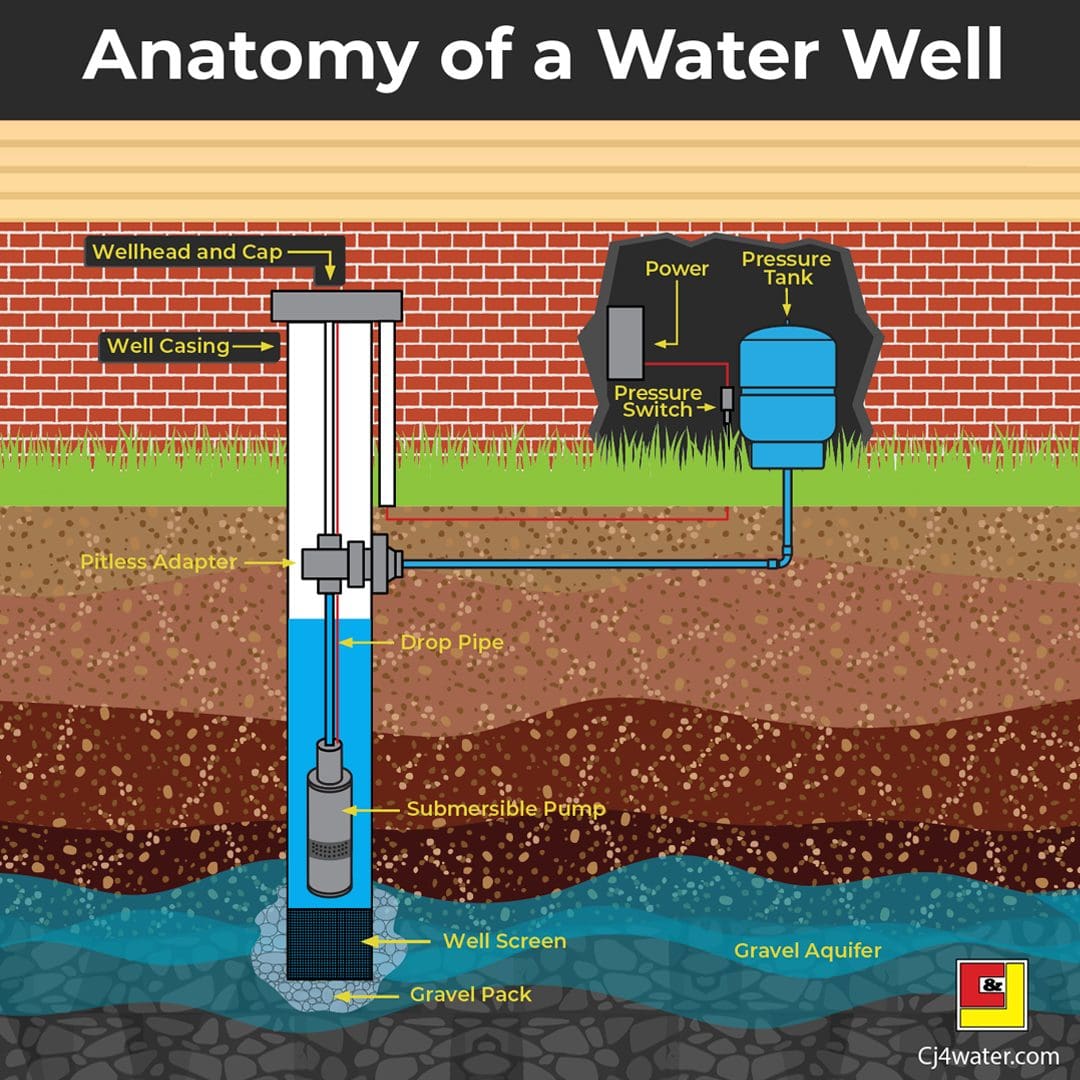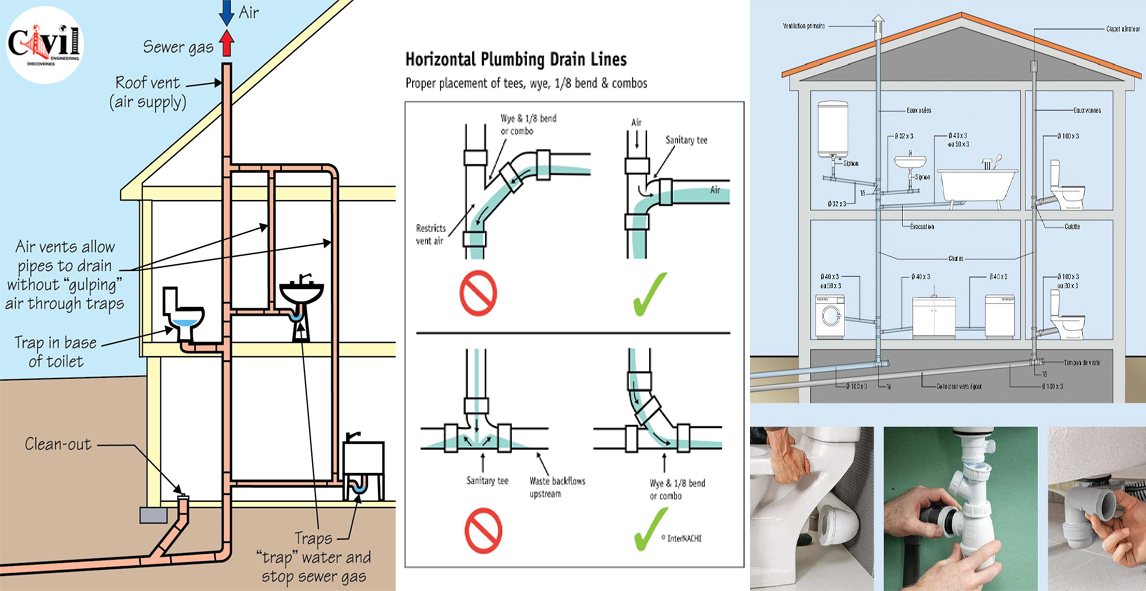Exploring Your Home's Plumbing System Anatomy
Exploring Your Home's Plumbing System Anatomy
Blog Article
How do you really feel about The Inner Workings of Your Home's Plumbing?

Comprehending exactly how your home's plumbing system works is necessary for each house owner. From supplying tidy water for alcohol consumption, cooking, and bathing to securely getting rid of wastewater, a properly maintained pipes system is essential for your family members's health and wellness and comfort. In this detailed guide, we'll explore the elaborate network that makes up your home's plumbing and offer suggestions on maintenance, upgrades, and taking care of typical problems.
Intro
Your home's plumbing system is greater than simply a network of pipes; it's an intricate system that guarantees you have access to clean water and efficient wastewater elimination. Recognizing its parts and exactly how they work together can aid you protect against pricey repairs and ensure everything runs efficiently.
Basic Parts of a Pipes System
Pipes and Tubes
At the heart of your plumbing system are the pipes and tubes that carry water throughout your home. These can be constructed from different products such as copper, PVC, or PEX, each with its advantages in regards to resilience and cost-effectiveness.
Components: Sinks, Toilets, Showers, etc.
Components like sinks, bathrooms, showers, and bathtubs are where water is made use of in your home. Recognizing just how these components attach to the plumbing system helps in detecting problems and intending upgrades.
Valves and Shut-off Factors
Shutoffs control the circulation of water in your plumbing system. Shut-off shutoffs are essential throughout emergencies or when you require to make repairs, allowing you to separate parts of the system without disrupting water flow to the entire residence.
Supply Of Water System
Key Water Line
The major water line links your home to the local water supply or a private well. It's where water enters your home and is distributed to different fixtures.
Water Meter and Pressure Regulatory Authority
The water meter measures your water usage, while a pressure regulator makes certain that water moves at a risk-free stress throughout your home's pipes system, protecting against damages to pipelines and components.
Cold Water vs. Hot Water Lines
Comprehending the distinction in between cold water lines, which supply water directly from the primary, and hot water lines, which bring warmed water from the hot water heater, helps in fixing and planning for upgrades.
Drain System
Drain Pipes Pipeline and Traps
Drain pipes lug wastewater far from sinks, showers, and toilets to the sewer or septic tank. Catches protect against sewage system gases from entering your home and also trap debris that might trigger obstructions.
Ventilation Pipes
Ventilation pipes allow air into the drainage system, protecting against suction that can slow down water drainage and trigger catches to vacant. Appropriate ventilation is important for preserving the integrity of your pipes system.
Importance of Correct Drainage
Ensuring appropriate drain avoids backups and water damages. Regularly cleansing drains pipes and keeping catches can avoid costly repairs and extend the life of your pipes system.
Water Furnace
Sorts Of Water Heaters
Water heaters can be tankless or traditional tank-style. Tankless heaters heat water on demand, while storage tanks store heated water for immediate usage.
Updating Your Pipes System
Factors for Updating
Updating to water-efficient components or replacing old pipelines can enhance water quality, reduce water expenses, and enhance the worth of your home.
Modern Pipes Technologies and Their Benefits
Explore modern technologies like wise leak detectors, water-saving bathrooms, and energy-efficient water heaters that can conserve cash and decrease environmental effect.
Cost Factors To Consider and ROI
Determine the in advance costs versus lasting cost savings when taking into consideration pipes upgrades. Lots of upgrades pay for themselves via minimized utility costs and fewer repair services.
Exactly How Water Heaters Connect to the Plumbing System
Recognizing how hot water heater link to both the cold water supply and hot water distribution lines aids in detecting problems like insufficient warm water or leaks.
Upkeep Tips for Water Heaters
Consistently purging your water heater to eliminate debris, inspecting the temperature level settings, and inspecting for leakages can expand its life expectancy and improve power efficiency.
Typical Plumbing Problems
Leakages and Their Causes
Leakages can take place due to aging pipelines, loose installations, or high water stress. Attending to leaks without delay stops water damage and mold and mildew growth.
Clogs and Obstructions
Clogs in drains and commodes are commonly caused by purging non-flushable things or a build-up of grease and hair. Utilizing drain displays and bearing in mind what goes down your drains can avoid clogs.
Indications of Plumbing Troubles to Look For
Low water stress, slow-moving drains pipes, foul odors, or unusually high water expenses are indicators of possible plumbing troubles that should be addressed immediately.
Plumbing Maintenance Tips
Routine Examinations and Checks
Schedule annual plumbing evaluations to catch concerns early. Try to find indications of leakages, deterioration, or mineral build-up in faucets and showerheads.
DIY Maintenance Tasks
Simple tasks like cleaning tap aerators, checking for bathroom leaks making use of dye tablet computers, or insulating subjected pipelines in chilly climates can avoid significant pipes problems.
When to Call an Expert Plumber
Know when a pipes issue needs expert expertise. Trying complicated repairs without appropriate understanding can result in even more damage and higher fixing expenses.
Tips for Reducing Water Usage
Easy habits like dealing with leaks immediately, taking much shorter showers, and running complete loads of laundry and recipes can conserve water and lower your utility expenses.
Eco-Friendly Pipes Options
Think about sustainable plumbing materials like bamboo for flooring, which is durable and environmentally friendly, or recycled glass for counter tops.
Emergency Readiness
Steps to Take During a Plumbing Emergency situation
Know where your shut-off valves are located and exactly how to shut off the water system in case of a ruptured pipeline or major leak.
Importance of Having Emergency Situation Get In Touches With Handy
Maintain get in touch with information for neighborhood plumbings or emergency solutions conveniently offered for quick response throughout a pipes situation.
Ecological Influence and Preservation
Water-Saving Fixtures and Appliances
Setting up low-flow faucets, showerheads, and bathrooms can dramatically minimize water usage without compromising efficiency.
DIY Emergency Situation Fixes (When Appropriate).
Short-term fixes like using duct tape to patch a leaking pipe or placing a container under a leaking tap can lessen damage until a professional plumbing technician shows up.
Conclusion.
Comprehending the anatomy of your home's pipes system empowers you to preserve it properly, conserving time and money on repair work. By complying with normal upkeep routines and staying informed concerning modern-day plumbing innovations, you can ensure your pipes system runs efficiently for several years to come.
Exploring Your Homes Plumbing Anatomy
Water Supply System
Main Water Line: This is where water enters your home from the municipal supply or a private well. Water Meter: Typically located near where the main water line enters the property, it measures the amount of water used. Shutoff Valve: It s crucial to know where this is in case of emergencies. It allows you to turn off the water supply to the entire house. Pipes and Fittings: These distribute water throughout your home. Materials can include copper, PVC, or PEX. Drain-Waste-Vent (DWV) System
Drains: Located in sinks, showers, and tubs, these carry wastewater away. Traps: U-shaped pipes under sinks that hold standing water, blocking sewer gases from entering the home. Vents: Pipes that lead from the DWV system to the outside, preventing vacuum formation and allowing gases to escape. Sewer Line: Carries all wastewater from the home to the municipal sewer system or a septic tank. Fixtures and Appliances
Sinks, Toilets, and Showers Dishwashers and Washing Machines Water Heaters Maintenance Tips
Regularly check for leaks in exposed pipes and around fixtures. Inspect the water heater annually for signs of wear. Clean drains and traps to prevent clogs and odors. Know how to shut off water to individual fixtures. When to Call a Professional
Major leaks or burst pipes Installation of new pipes or fixtures Septic tank issues Remodeling projects that involve plumbing changes Conclusion
Understanding the anatomy of your home's plumbing is key to maintaining a functional and efficient system. Regular checks and knowing when to call in the experts can save you time, money, and stress.
https://www.mavyn.com/blog/exploring-your-homes-plumbing-anatomy

As a serious person who reads about Exploring Your Homes Plumbing Anatomy, I was thinking sharing that piece of writing was beneficial. In case you enjoyed reading our blog entry plz make sure you remember to pass it around. We enjoy your readership.
Call Today Report this page